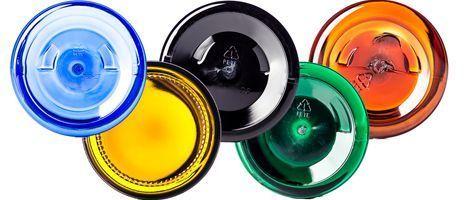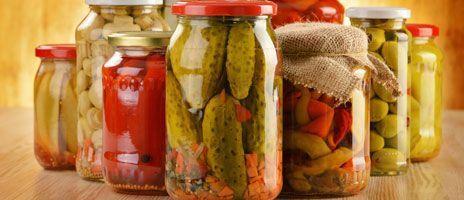Packaging Solutions for Organic and Natural Cosmetics


The Importance of Sustainable Packaging
As the demand for organic and natural cosmetics continues to grow, so does the need for eco-friendly and sustainable packaging solutions. Consumers are increasingly seeking products that align with their values, including ethical sourcing, biodegradable materials, and minimal environmental impact. Choosing the right packaging for organic cosmetics is essential not only for preserving product integrity but also for reinforcing a brand’s commitment to sustainability.
With governments implementing stricter regulations on plastic waste and consumers becoming more environmentally conscious, brands must rethink their packaging strategies. Sustainable packaging not only minimizes ecological impact but also differentiates a brand in a competitive marketplace. From innovative biodegradable materials to refillable solutions, packaging trends are shifting toward long-term environmental responsibility.
1. Why Packaging Matters for Organic and Natural Cosmetics
Organic and natural cosmetics often contain delicate ingredients that require special packaging to maintain their potency and effectiveness. Additionally, packaging plays a crucial role in brand storytelling, consumer trust, and environmental impact.
Key Considerations:
- Material Sustainability: Biodegradable, recyclable, or compostable materials reduce environmental impact.
- Product Protection: Packaging must prevent contamination and extend shelf life.
- Aesthetic and Branding: Eco-friendly packaging should still be visually appealing and align with a brand’s image.
- Consumer Education: Informing consumers on how to properly dispose of or reuse packaging is crucial for maintaining sustainability efforts.
- Supply Chain Efficiency: Using sustainable packaging solutions must also be cost-effective and scalable for long-term success.
2. Sustainable Packaging Materials
Glass Containers
- Ideal for serums, essential oils, and creams.
- Fully recyclable and reusable.
- Provides UV protection when tinted or frosted.
- Perceived as luxurious and premium, enhancing brand positioning.
Biodegradable Plastics
- Made from plant-based materials like cornstarch or sugarcane.
- Breaks down naturally without leaving harmful residues.
- Reduces reliance on fossil fuels, contributing to lower carbon emissions.
Paper and Cardboard
- Used for secondary packaging such as boxes and tubes.
- Can be sourced from recycled materials and is widely recyclable.
- Can be embedded with seeds to encourage reusability and reduce waste.
Aluminum Packaging
- Lightweight, durable, and infinitely recyclable.
- Ideal for deodorants, lip balms, and solid cosmetics.
- Resistant to corrosion and provides an airtight seal for product longevity.
Bamboo and Wooden Packaging
- Sustainable, biodegradable, and visually appealing.
- Commonly used for compacts, lids, and applicators.
- Often sourced from renewable forests with sustainable harvesting practices.
3. Minimalist and Zero-Waste Packaging
A growing trend in the beauty industry is zero-waste packaging, which eliminates unnecessary materials and encourages reuse.
Solutions:
- Refillable containers: Encourage customers to repurchase product refills instead of new packaging.
- Solid and waterless cosmetics: Reduce the need for plastic containers (e.g., shampoo bars, lotion bars).
- Minimalist labels and inks: Use soy-based inks and recyclable adhesives.
- Compostable packaging: Materials such as mycelium (mushroom-based packaging) and plant cellulose reduce landfill waste.
- Reusable packaging: Encouraging consumers to repurpose containers for other uses, such as storage or DIY projects.
4. Certifications and Compliance
Consumers of organic and natural cosmetics often look for certifications that verify a brand’s sustainability claims.
Common Certifications:
- USDA Organic: Ensures organic ingredients and sustainable sourcing.
- ECOCERT: Guarantees compliance with strict environmental standards.
- FSC (Forest Stewardship Council): Ensures responsible paper and wood sourcing.
- Cradle to Cradle Certified™: Recognizes sustainable and circular packaging solutions.
- Leaping Bunny Certification: Confirms cruelty-free product testing.
- Plastic-Free Certification: Ensures that the packaging does not contain any petroleum-based plastics.
5. Branding and Consumer Appeal
Sustainable packaging doesn’t have to compromise on aesthetics. Brands can enhance their eco-friendly image while maintaining premium appeal.
Strategies:
- Earthy and neutral tones: Reflect natural ingredients and sustainability.
- Minimalist, clean design: Communicates purity and eco-consciousness.
- Storytelling on packaging: Highlight sustainability efforts and ethical sourcing.
- Embossing and laser etching: Reduce ink use while maintaining branding elements.
- Interactive packaging: QR codes directing consumers to sustainability reports and recycling instructions.
6. The Role of Technology in Sustainable Packaging
Technology is playing an increasingly significant role in advancing sustainable packaging options. With smart packaging solutions, brands can enhance transparency, consumer education, and sustainability efforts.
Smart Packaging Innovations:
- QR Codes & NFC Chips: Provide information on packaging recyclability and product sourcing.
- Edible Packaging: Some companies are developing biodegradable edible films to replace conventional plastic wraps.
- Smart Labels: Indicate product freshness and reduce food and cosmetic waste.
- Blockchain Technology: Enhances supply chain transparency by tracking the sustainability of packaging materials from source to final product.
7. Challenges in Implementing Sustainable Packaging
While sustainable packaging is growing in popularity, brands still face several challenges when transitioning to eco-friendly alternatives.
Common Challenges:
- Higher production costs: Sustainable materials and ethical sourcing can be more expensive.
- Limited availability of alternatives: Some biodegradable materials may not be widely available for mass production.
- Consumer behavior: Many consumers are still unfamiliar with proper disposal and recycling practices.
- Regulatory compliance: Different regions have varying regulations regarding eco-friendly packaging, adding complexity to international brands.
Solutions:
- Partnering with suppliers who specialize in sustainable materials.
- Educating consumers through packaging labels and marketing efforts.
- Working with governments and industry groups to improve recycling infrastructure.
- Investing in research and development to find cost-effective solutions.
Making the Right Packaging Choice
Choosing the right packaging for organic and natural cosmetics is about balancing sustainability, product integrity, and brand appeal. With innovative materials, minimalist approaches, and eco-certifications, brands can meet consumer expectations while reducing their environmental footprint.
The future of packaging is green, and companies that invest in sustainable solutions now will build stronger brand loyalty and credibility in the years to come. As the organic beauty market continues to expand, sustainable packaging will not just be an option—it will be a necessity for long-term success.
Looking for sustainable packaging solutions? Explore our range of eco-friendly cosmetic containers today!




